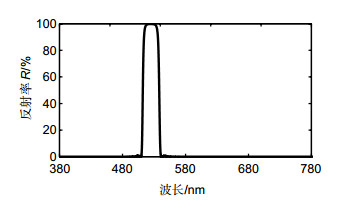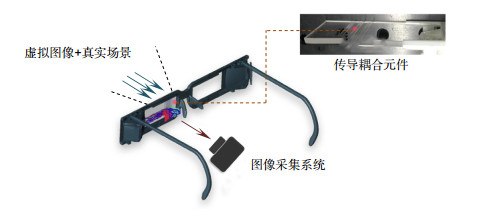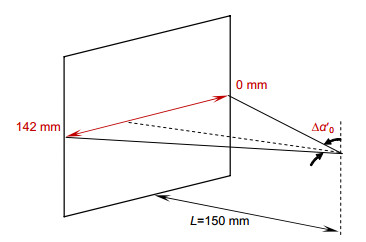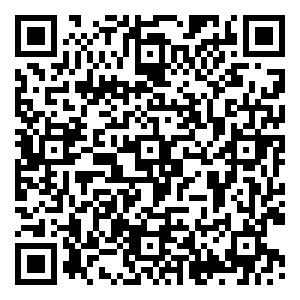-
摘要
本文提出了一种用于实现大视场紧凑型的增强现实眼镜显示器的方法。采用平面波导以及嵌入的窄带负滤光膜来完成图像的传导和耦合。整个光学系统结构简单,并且具有体积小、质量轻的优点。在此方法下,通过建立光线在波导中的几何导光模型,分析了图像传导的约束条件,得到了波导结构的设计参数以及其与显示视场角之间的关系。根据计算结果,制作了一个3 mm厚的波导耦合器件来进行原理验证。实验结果表明,利用设计的波导元件及搭建的增强现实眼镜显示器的光学系统可以实现虚拟图像的传导以及其与真实环境的融合,测得的显示视场角约为50°。

Abstract
We present a way to achieve the compact augmented reality (AR) smart glasses with a large field of view (FOV). A planar waveguide and embedded narrow band minus filters are used for image transmission and coupling. The optical system based on the method is simple in structure and has the advantages of small size and lightweight. A geometric model for the propagation of light in the waveguide is constructed. Based on this model, the constraints of the structure and the dependence of designed parameters with viewing angles are analyzed. According to the calculations, a 3 mm thick waveguide is fabricated to investigate the feasibility of the theory. Experimental results demonstrate that the prototype can deliver a projected image and realize the fusion of the virtual image and the real scene as expected, the measured viewing FOV was about 50°.
-
Key words:
- augmented reality /
- smart glasses /
- waveguide /
- field of view
-
Overview

Overview: Augmented reality (AR) smart glasses are capable of superimposing computer-generated information on the real world. Until now, various combiners for delivering displayed virtual image, for instance, semi-reflective reflectors, hologram, and freeform prism have been adopted. However, they are suffering from some problems, such as low light efficiency, relative short lifetime when exposed to environmental variations, and complex production process. What's more, to realize large field of view (FOV) is still a great challenge, especially for AR smart glasses with compact format. In this paper, we present a method to achieve compact AR glasses by using a planar waveguide with embedded narrow band minus filters. The planar waveguide works as an element for the transmission of projected virtual image, while the minus filters work for coupling the image from the micro-display into the waveguide, and coupling it out of the waveguide on the other side to the eye of a viewer. Since the minus filters reflect only the specified waveband from a wide spectral range, the output virtual image from the waveguide can maintain high luminance and the rays from the ambient environment can pass through the waveguide with high transmittance. Furthermore, an array of parallel out minus filters is arranged at the output side, so that exit beams can be expanded without additional ghost images. To get the design parameters of the waveguide and the viewing angle that can be transferred by the waveguide, a geometric model was constructed. According to that, constraints of the design parameters and the relationship of them with the incident angles were analyzed. Based on the calculation results, a 3 mm thick waveguide, which can deliver a FOV of 53° theoretically, was fabricated to verify the feasibility of the proposed method. Experiment was conducted with the first prototype. A virtual image was provided by a projector and a camera was used at the output side for capturing the exit virtual image and the real scene. Through the photo taken by the camera, we can see both the suspended image and a view of the real environment. Experimental result demonstrated that the waveguide can deliver a projected image and realize the fusion of the virtual image and the real scene as expected. The actual FOV transferred by the prototype was about 50°. In conclusion, the present approach is a very promising design to enable a compact AR glasses with a large FOV.
-

-
-
参考文献
[1] Vallino J R. Interactive augmented reality[D]. New York: University of Rochester, 1998.
[2] 施琦, 王涌天, 陈靖.一种基于视觉的增强现实三维注册算法[J].中国图象图形学报, 2002, 7(7): 679-683. doi: 10.3969/j.issn.1006-8961.2002.07.011
Shi Q, Wang Y T, Chen J. Vision-based algorithm for augmented reality registration[J]. Journal of Image and Graphics, 2002, 7(7): 679-683. doi: 10.3969/j.issn.1006-8961.2002.07.011
[3] Furness Ⅲ T A. The super cockpit and its human factors challenges[J]. Proceedings of the Human Factors and Ergonomics Society Annual Meeting, 1986, 30(1): 48-52. doi: 10.1177/154193128603000112
[4] Pentenrieder K, Meier P. The need for accuracy statements in industrial Augmented Reality applications[C]//Proceedings of the 5th IEEE and ACM International Symposium on Mixed and Augmented Reality, Santa Barbara, 2006.
[5] Argotti Y, Davis L, Outters V, et al. Dynamic superimposition of synthetic objects on rigid and simple-deformable real objects[J]. Computers & Graphics, 2002, 26(6): 919-930.
[6] Rolland J P, Fuchs H. Optical versus video see-through head-mounted displays in medical visualization[J]. Presence: Teleoperators and Virtual Environments, 2000, 9(3): 287-309. doi: 10.1162/105474600566808
[7] Bichlmeier C, Heining S M, Feuerstein M, et al. The virtual mirror: A new interaction paradigm for augmented reality environments[J]. IEEE Transactions on Medical Imaging, 2009, 28(9): 1498-1510. doi: 10.1109/TMI.2009.2018622
[8] Rosenthal M, State A, Lee J, et al. Augmented reality guidance for needle biopsies: an initial randomized, controlled trial in phantoms[J]. Medical Image Analysis, 2002, 6(3): 313-320. doi: 10.1016/S1361-8415(02)00088-9
[9] 任波, 李利军, 曹伟明, 等.基于增强现实的交互式城市设计研究.华中科技大学学报(城市科学版), 2006, 23(2): 32-34. http://d.old.wanfangdata.com.cn/Periodical/whcsjsxyxb200602009
Ren B, Li L J, Cao W M, et al. Interactive urban design based on augmented reality[J]. Journal of Huazhong University of Science and Technology (Urban Science Edition), 2006, 23(2): 32-34. http://d.old.wanfangdata.com.cn/Periodical/whcsjsxyxb200602009
[10] 王涌天, 刘越, 胡晓明.户外增强现实系统关键技术及其应用的研究[J].系统仿真学报, 2003, 15(3) 329-333, 337. doi: 10.3969/j.issn.1004-731X.2003.03.008
Wang Y T, Liu Y, Hu X M. Study on key technique and application of outdoor AR system[J]. Journal of System Simulation, 2003, 15(3): 329-333, 337. doi: 10.3969/j.issn.1004-731X.2003.03.008
[11] Fjeld M, Voegtli B M. Augmented chemistry: an interactive educational workbench[C]//Proceedings, International Symposium on Mixed and Augmented Reality, Darmstadt, Germany, Germany, 2002: 259.
[12] 柳祖国, 李世其, 李作清.增强现实技术的研究进展及应用[J].系统仿真学报, 2003, 15(2): 222-225. doi: 10.3969/j.issn.1004-731X.2003.02.021
Liu Z G, Li S Q, Li Z Q. Development and application of augmented reality[J]. Journal of System Simulation, 2003, 15(2): 222-225. doi: 10.3969/j.issn.1004-731X.2003.02.021
[13] Microsoft HoloLens[EB/OL].[2018-10-25]. https://www.microsoft.com/microsoft-hololens/en-us.
[14] Cakmakci O, Thompson K, Vallee P, et al. Design of a free-form single-element head-worn display[J]. Proceedings of SPIE, 2010, 7618: 1-6. http://www.wanfangdata.com.cn/details/detail.do?_type=perio&id=CC029579492
[15] Cheng D W, Wang Y T, Hua H, et al. Design of a wide-angle, lightweight head-mounted display using free-form optics tiling[J]. Optics Letters, 2011, 36(11): 2098-2100. doi: 10.1364/OL.36.002098
[16] Moverio BT-300 Smart Glasses[EB/OL]. (2018-10-25). https://epson.com/For-Work/Wearables/Smart-Glasses/Moverio-BT-300-Smart-Glasses-%28ARDeveloper-Edition%29-/p/V11H756020.
[17] Cheng D W, Wang Y T, Xu C, et al. Design of an ultra-thin near-eye display with geometrical waveguide and freeform optics[J]. Optics Express, 2014, 22(17): 20705-20719. doi: 10.1364/OE.22.020705
[18] Oku T, Akutsu K, Kuwahara M, et al. 15.2: high luminance see-through eyewear display with novel volume hologram waveguide technology[J]. SID Symposium Digest of Technical Papers, 2015, 46(1): 192-195. doi: 10.1002/sdtp.10308
[19] Amitai Y, Friesem A A, Weiss V. Holographic elements with high efficiency and low aberrations for helmet displays[J]. Applied Optics, 1989, 28(16): 3405-3416. doi: 10.1364/AO.28.003405
[20] Kress B. See through optical architectures for wearable displays[C]//Applied Industrial Optics: Spectroscopy, Imaging and Metrology 2014, 2014.
[21] Li H, Zhang X, Shi G W, et al. Review and analysis of avionic helmet-mounted displays[J]. Optical Engineering, 2013, 52(11): 110901-110915. doi: 10.1117/1.OE.52.11.110901
[22] Thelen A. Design of optical minus filters[J]. Journal of the Optical Society of America, 1971, 61(3): 365-369. doi: 10.1364/JOSA.61.000365
[23] Amotchkina T V. Analytical estimations for the reference wavelength reflectance and width of high reflection zone of two-material periodic multilayers[J]. Applied Optics, 2013, 52(19): 4590-4595. doi: 10.1364/AO.52.004590
[24] Schallenberg U, Ploss B, Lappschies M, et al. Design and manufacturing of high-performance notch filters[J]. Proceedings of SPIE, 2010, 7739: 77391X. doi: 10.1117/12.856580
[25] Hall J T. Controlled method of manufacture of multiple-notch rugate filters: U.S. Patent5, 009, 485[P]. 1991-04-23.
[26] Hendrix K D, Hulse C A, Ockenfuss G J, et al. Demonstration of narrowband notch and multi-notch filters[J]. Proceedings of SPIE, 2008, 7067: 706702. doi: 10.1117/12.795498
[27] Zhang J L, Xie Y J, Cheng X B, et al. Thin-film thickness-modulated designs for optical minus filter[J]. Applied Optics, 2013, 52(23): 5788-5793. doi: 10.1364/AO.52.005788
-
访问统计


 E-mail Alert
E-mail Alert RSS
RSS
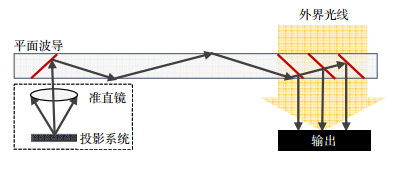
 下载:
下载:
